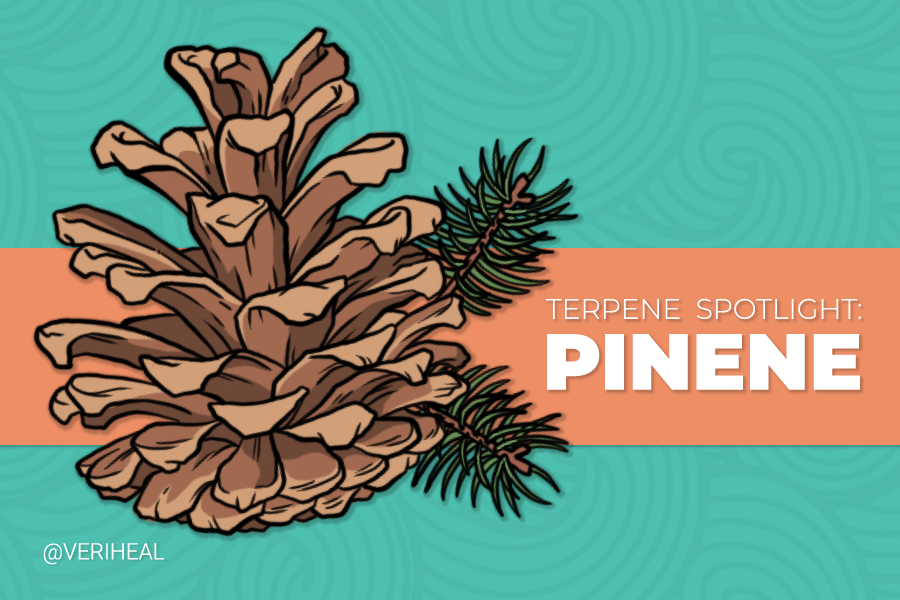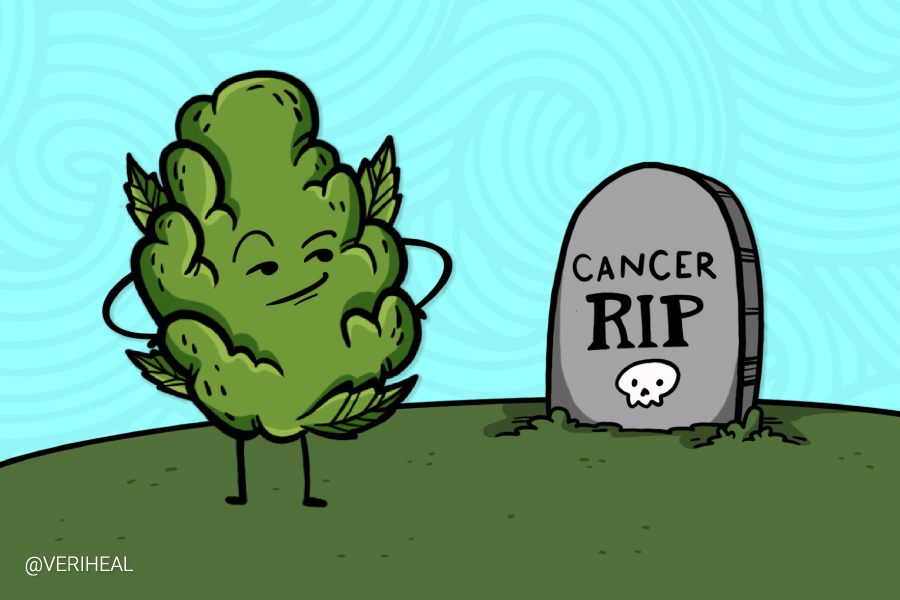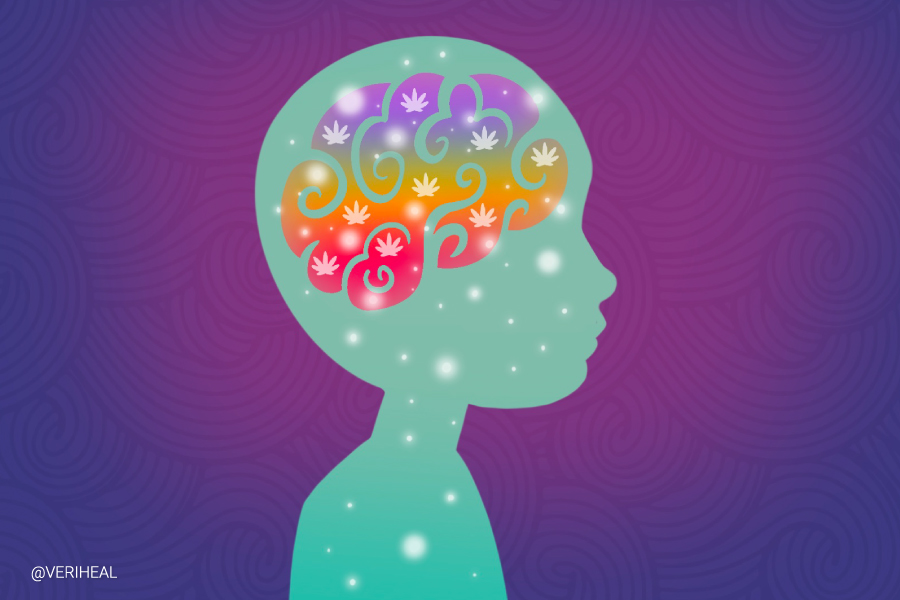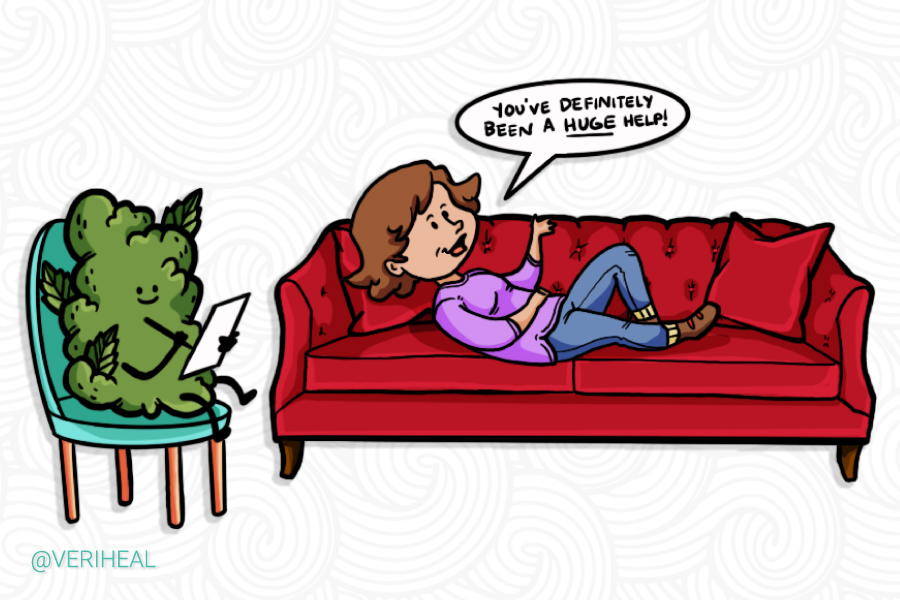Neuroblastoma and Medical Cannabis Treatment
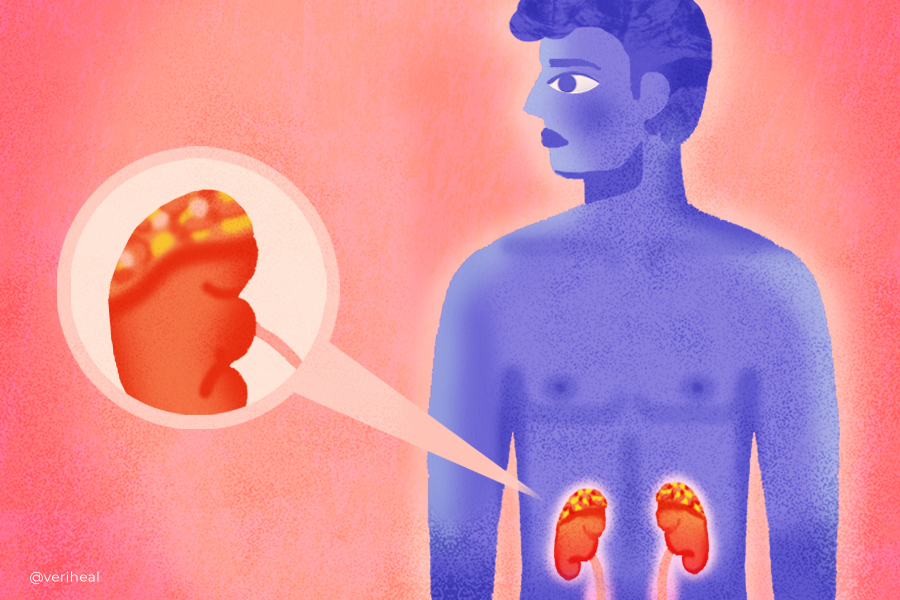
- Treatment: Can Cannabinoids Provide Relief for Neuroblastoma?
- The Role of the Endocannabinoid System in Treating Neuroblastoma
- What Preparations of Cannabis are Best for Neuroblastoma?
- Talking to Your Doctor About Neuroblastoma Diagnosis and Treatment
- Neuroblastoma: Signs, Symptoms, and Types
- Causes and Complications of Neuroblastoma
- Complementary Treatments Worth Discussing with Your Doctor
Neuroblastoma is the most common type of cancer diagnosed in infants younger than 1 year old, with most patients being diagnosed between 1 and 2 years old. Almost 90% of neuroblastoma is detected in children younger than 5. In people 10 or older, neuroblastoma is a rarity. This potentially aggressive type of cancer develops in the nerve tissue and accounts for 6% of all childhood cancers in the United States (1).
“Neuro” refers to nerves, while the term “blastoma” is used to describe cancer that begins in developing or immature cells. Every year, doctors in the U.S. will diagnose around 700-800 new cases of neuroblastoma (2). The cancer cells start to grow rapidly and uncontrollably in the early forms of nerve cells, most of which are usually found in an embryo or fetus.
Cells in almost any part of the body can become cancerous before spreading to other areas of the body. However, neuroblastomas almost always begin in adrenal glands in the abdomen, which sit above the kidneys. The disease can also arise in sympathetic ganglia nerve cell bodies near the spine in the chest or neck, as well as the pelvis.
Using lab dishes to experiment with cannabinoids, scientists have observed the cancer cell-killing capabilities of the plant’s primary compounds, tetrahydrocannabinol (THC) and cannabidiol (CBD, a non-psychoactive cannabinoid) as well as several minor cannabinoids (3).
In humans, cannabinoids can provide significant symptomatic relief (4) for persons with cancer, a fact acknowledged by the American Cancer Society. Certain animal studies also support the use of specific cannabinoids to slow growth and reduce the spread of some forms of cancer (4).
Treatment: Can Cannabinoids Provide Relief for Neuroblastoma?
There have been a number of early clinical trials of medical cannabis as a cancer treatment in humans, and more studies are set to take place in the near future. Although studies have demonstrated that cannabinoids can be safely used to relieve cancer and chemo-related symptoms, they do not prove that the use of cannabis-derived compounds helps control or cure the disease. Despite the increased use of medical marijuana, the efficacy and safety of this type of treatment among children remains uncertain, other than with Epidiolex (pharmaceutical CBD) for childhood seizures (5).
Current research focuses on the potential antitumor activity of plant-derived or phytocannabinoids, including delta-9-tetrahydrocannabinol (THC), cannabinol (CBN), delta-8-THC, cannabidiol (CBD), cannabigerol (CBG), cannabigerolic acid (CBGA), cannabichromene (CBC), cannabitriol (CBT), and cannabicyclol (CBL), in addition to synthetic cannabinoids (3).
Various plant-derived cannabinoids and cannabis-based pharmaceutical drugs have been the focal point of in-depth research for their potential antitumor properties, particularly in cancer cells that overexpress CB1 and CB2 cannabinoid receptors compared to normal tissues (6). Other anti-inflammatory receptors like TRP may also be of relevance in the development of cancer cells, which cannabinoids target. It’s important to note that the antitumor effects of cannabinoids depend on their concentration and quality.
The American Cancer Society—the largest non-profit funder of cancer research in the U.S.–supports the need for further scientific studies into the use of cannabinoids for cancer patients and acknowledges the need for more reliable therapies to diminish the often devastating side effects of cancer and associated treatments.
The Role of the Endocannabinoid System in Treating Neuroblastoma
Various studies have proven the importance of the endocannabinoid system’s role in regulating various physiological and pathological processes. This complex cell signaling network is also known as the ECS. Since it assists with the regulation of cancer cell signaling, among many other things like excitatory and inhibitory synaptic transmission in the central nervous system (CNS), analgesia, food intake, nociceptive signaling, immunomodulation, and inflammation, there’s good reason to believe that the ECS may play a pivotal role in alleviating the symptoms of neuroblastoma (7).
What Preparations of Cannabis are Best for Neuroblastoma?
Neuroblastoma patients are usually children, so the main method of administration that might be accepted is cannabis oil. The good thing about oils is that they can be dropped onto the tongue or added to foods with the use of a tincture. Other cannabis preparations that might be suitable for neuroblastoma include pills, capsules, and tablets.
Talking to Your Doctor About Neuroblastoma Diagnosis and Treatment
Upon meeting with a pediatric doctor to get a neuroblastoma diagnosis, he or she will likely carry out a physical exam. This will enable the medical professional to spot any signs and symptoms. Additionally, urine tests may be required to detect high levels of chemicals that are released when the neuroblastoma cells produce excess catecholamines (8).
Imaging tests, such as X-rays, ultrasounds, computerized tomography (CT) scans, metaiodobenzylguanidine (mIBG) scans, and magnetic resonance imaging (MRI) can be used to find neuroblastoma tumors. A mass can also be identified by removing a sample of tissue or bone marrow for laboratory testing (biopsy). Biopsies prove useful in determining what cells are associated with the tumor, as well as the genetic composition of the cancer cells.
Common treatment options for neuroblastoma include chemotherapy, radiation therapy, surgery, and iodine 131-MIBG therapy. After a diagnosis, you can begin discussing the medical uses of cannabis-based treatment options with a doctor. However, it’s important to note that cannabis should not be used as a substitute for other types of doctor-prescribed medications and treatments.
Neuroblastoma: Signs, Symptoms, and Types
Neuroblastoma symptoms vary depending on the where the tumors are located in the body, but some common signs of this cancer include:
- Appetite loss
- Belly pain
- Chronic fatigue
- Difficulty breathing or swallowing
- General aches and pains
- Problems with bowel movements or urination
- Strange mass or lump
- Stomach swelling
- Swelling in the face or throat
- Weight loss (9)
The six different stages of neuroblastoma, as classified by the International Neuroblastoma Staging System (INSS), are as follows (10):
- Stage 1: After detecting a tumour that does not cross the midline of the body, surgery will be carried out to remove cancer and prevent spreading. During Stage 1, patients do not have cancer cells present in the lymph nodes on the same side of the body as the tumor.
- Stage 2A: When a tumor does not cross the midline of the body, a doctor will diagnose Stage 2A neuroblastoma. Although all visible tumors will be removed, tumor removal remains incomplete. During Stage 2A, patients do not have cancer cells present in the lymph nodes on the same side of the body as the tumor.
- Stage 2B: This stage involves a tumor that may or may not be fully removed (resected), but has not spread to other body parts. During Stage 2B, patients have cancer cells present in the lymph nodes on the same side of the body as the tumor, but not on the opposite side.
- Stage 3: Tumors that cross the midline of the body exist in patients with Stage 3 neuroblastoma. Tumor cells may or may not be present in the lymph nodes, but a tumor that does not cross the midline will be present. During Stage 3, patients have lymph nodes on the opposite side of the body as the tumor cells.
- Stage 4: A cancerous tumor has spread to distant lymph nodes, skin, liver, bone marrow, and potentially to other organs (except as defined in stage 4S).
- Stage 4S: Patients with Stage 4S neuroblastoma have tumor growth that has spread to the liver, skin, or bone marrow, but not to the bones. Children below the age of 1 are usually diagnosed with this stage of neuroblastoma.
Causes and Complications of Neuroblastoma
Cases of neuroblastoma occur due to gene mutation, but the reason why the gene mutates is uncertain. Doctors and scientists do, however, recognize the fact that the mutation can be passed from the parent to the child. This suggests that genetics have a role to play in the causes of neuroblastoma (11). MYCN is the most important of many biological markers of neuroblastoma to be discovered so far. Often detected in patients with advanced cancer, MYCN overexpression happens in almost 25% of patients with neuroblastoma (12).
Most children with neuroblastoma have a positive outlook, but children classified in the “high risk” category have an estimated 50% chance of surviving a minimum of 5 years (13). Doctors classify cases into different risk groups to better understand whether or not the cancer can be cured and what treatment options would be most effective (14).
Most doctors will follow the Children’s Oncology Group (COG) risk group criteria:
- Very-low risk: Five-year survival greater than 85%
- Low-risk group: Children in the low-risk group have a 5-year survival rate of around 75-85%.
- Intermediate-risk group: Children in the intermediate-risk group have a 5-year survival rate of approximately 50%- 75%.
- High-risk group: Children in the high-risk group have a 5-year survival rate of less than 50%.
Metastasis is a possible complication of neuroblastoma, meaning that a second tumor may develop in a different body part. “Metastasis” is defined as “the transfer of disease from one organ or part to another not directly connected with it.”
Since metastatic cancer is more difficult to treat, the importance of early diagnosis cannot be ignored. With early diagnosis, doctors can more effectively prevent neuroblastoma progression of neuroblastoma. Consequently, less treatment will be required.
Complementary Treatments Worth Discussing with Your Doctor
A growing number of parents are seeking out ways to alleviate the symptoms of various medical conditions for their children, such as those caused by neuroblastoma (15). The scientific proof of complementary and alternative medicine (CAM) in children with cancer is gradually evolving.
While no complementary approach has been shown to cure cancer or push it into remission, the National Center for Integrative and Complementary Health (NIH) notes on its website that “acupuncture, mindfulness-based stress reduction, and yoga may help manage cancer symptoms and side effects of treatment” (16).
While the effects of cannabis may also prove beneficial in some cancer cases, such as by using CBD oil to manage feelings of chemotherapy-related nausea and pain, it’s imperative to consult with a doctor beforehand as well as continue using any prescribed medication(s). Relying on marijuana use alone as a standalone treatment for cancer could have serious health consequences.
The content on this page is for informational purposes only and is not intended to be professional medical advice. Do not attempt to self-diagnose or prescribe treatment based on the information provided. Always consult a physician before making any decision on the treatment of a medical condition.
1. Neuroblastoma — Childhood: Statistics. (2023). Cancer.net. https://www.cancer.net/cancer-types/neuroblastoma-childhood/statistics
2. What is Neuroblastoma? (Updated 2021). American Cancer Society. https://www.cancer.org/cancer/types/neuroblastoma/about/what-is-neuroblastoma.html
3. Walsh K.B., McKinney A.E., Holmes A.E. (2021). Minor Cannabinoids: Biosynthesis, Molecular Pharmacology and Potential Therapeutic Uses. Front Pharmacol. https://www.ncbi.nlm.nih.gov/pmc/articles/PMC8669157/
4. Marijuana and Cancer. (Updated 2022). American Cancer Society. https://www.cancer.org/cancer/managing-cancer/treatment-types/complementary-and-integrative-medicine/marijuana-and-cancer.html
5. Treves N., Mor N., Allegaert K., Bassalov H., Berkovitch M., Stolar O.E., Matok I. (2021). Efficacy and safety of medical cannabinoids in children: a systematic review and meta-analysis. Sci Rep. https://pubmed.ncbi.nlm.nih.gov/34873203/
6. McAllister S.D., Soroceanu L., Desprez P.Y. (2015). The Antitumor Activity of Plant-Derived Non-Psychoactive Cannabinoids. J Neuroimmune Pharmacol. https://pubmed.ncbi.nlm.nih.gov/25916739/
7. Guindon J., Hohmann A.G. (2009). The endocannabinoid system and pain. CNS Neurol Disord Drug Targets. https://pubmed.ncbi.nlm.nih.gov/19839937/
8. Neuroblastoma. (n.d.). Mayo Clinic. https://www.mayoclinic.org/diseases-conditions/neuroblastoma/diagnosis-treatment/drc-20351022
9. Neuroblastoma. (n.d.). UW Health. https://www.uwhealth.org/conditions/neuroblastoma
10. Reviewed by Casey Miller. (Updated 2022). Neuroblastoma. Cincinnati Children’s Hospital. https://www.cincinnatichildrens.org/health/n/neuroblastoma
11. Neuroblastoma. (n.d.). MedLine Plus. https://medlineplus.gov/neuroblastoma.html
12. Mahapatra S., Challagundla K.B. (Updated 2023). Neuroblastoma. National Library of Medicine. https://www.ncbi.nlm.nih.gov/books/NBK448111/
13. Neuroblastoma Survival Rates by Risk Group. (Updated 2021). American Cancer Society. https://www.cancer.org/cancer/types/neuroblastoma/detection-diagnosis-staging/survival-rates.html
14. Daniel Yetman, reviewed by Faith Selchick. (2022). What Is the Survival Rate for Neuroblastoma? Healthline. https://www.healthline.com/health/cancer/neuroblastoma-survival-rate
15. Sencer S.F., Kelly K.M. (2007). Complementary and alternative therapies in pediatric oncology. Pediatr Clin North Am. https://pubmed.ncbi.nlm.nih.gov/18061790/
16. Cancer and Complementary Health Approaches: What You Need To Know. (Updated 2021). National Institute of Health. https://www.nccih.nih.gov/health/cancer-and-complementary-health-approaches-what-you-need-to-know



